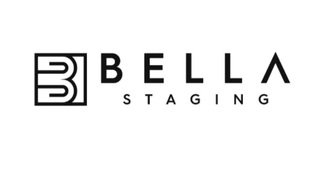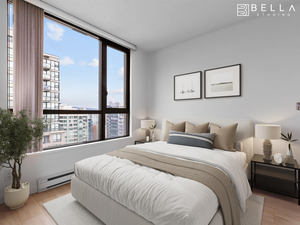More from Bella Virtual Staging USA
More in Politics
Related Blogs
Archivo
compartir social
Virtual Staging: Transforming Real Estate Marketing
Cuerpo
What is Virtual Staging?
Virtual staging is a revolutionary technology in the virtual staging industry that enhances property listings by digitally furnishing and decorating photos of empty or poorly furnished homes. This method involves using computer software to create realistic images of interiors, allowing potential buyers to visualize the property’s full potential without the need for physical staging.
Benefits of Virtual Staging
-
Cost-Effective: Traditional staging can be expensive, involving the rental of furniture and decor, transportation, and setup fees. Virtual staging eliminates these costs, making it a budget-friendly option for homeowners and real estate agents.
-
Time-Saving: Physical staging can take days or even weeks to arrange, while virtual staging can be completed in a matter of hours. This quick turnaround is crucial in a fast-paced real estate market.
-
Flexibility: Virtual staging offers unparalleled flexibility. Agents can experiment with different styles and layouts to appeal to various buyer demographics. This adaptability can be especially useful for targeting specific markets, such as young professionals or families.
-
Appealing Online Listings: In the digital age, most home buyers start their search online. High-quality, virtually staged photos can make a listing stand out, attracting more potential buyers and increasing the likelihood of a quicker sale.
-
Showcasing Potential: Many buyers struggle to envision an empty space’s potential. Virtual staging helps them see how rooms can be used and decorated, making it easier for them to imagine living in the home.
How Does Virtual Staging Work?
The process of virtual staging involves several steps:
-
Photography: High-resolution photos of the empty property are taken. The quality of these photos is crucial, as they form the foundation for the virtual staging process.
-
Design: Using specialized software, designers add furniture, decor, and other elements to the photos. They can choose from a vast library of items, ensuring the staged images reflect current design trends and appeal to the target market.
-
Rendering: The digitally staged images are rendered to ensure they look realistic. This step involves adjusting lighting, shadows, and textures to match the original photos.
-
Review and Approval: The virtually staged images are reviewed and approved by the real estate agent or homeowner. Any necessary adjustments can be made at this stage to ensure the final product meets their expectations.
-
Marketing: The final images are used in online listings, brochures, and other marketing materials to showcase the property.
Tips for Effective Virtual Staging
-
Keep it Simple: Avoid overloading the space with too much furniture or decor. The goal is to highlight the property’s features, not overshadow them.
-
Stay Neutral: Use neutral colors and styles that appeal to a broad audience. This approach helps potential buyers focus on the property rather than the furnishings.
-
Highlight Key Areas: Focus on staging important rooms such as the living room, kitchen, and master bedroom. These areas have the most impact on buyers’ decisions.
-
Accuracy is Key: Ensure the staged images accurately represent the property’s dimensions and layout. Misleading images can lead to disappointment and distrust among potential buyers.
-
Update Regularly: Design trends change, so it’s important to keep the virtual staging current. Regular updates can help maintain the listing’s appeal.
Challenges and Ethical Considerations
While virtual staging offers many benefits, it also comes with challenges virtual home staging and ethical considerations. Misleading buyers with overly enhanced images can result in disappointment during property viewings. It's essential to balance enhancing the property's appeal and maintaining an accurate representation.
Conclusion
Virtual staging is transforming real estate marketing by providing a cost-effective, flexible, and visually appealing way to showcase properties. By helping buyers visualize a home's potential, virtual staging can significantly enhance the online presence of listings, attract more interest, and ultimately lead to quicker sales. As technology continues to advance, virtual staging is poised to become an increasingly integral part of the real estate industry.














Comentarios